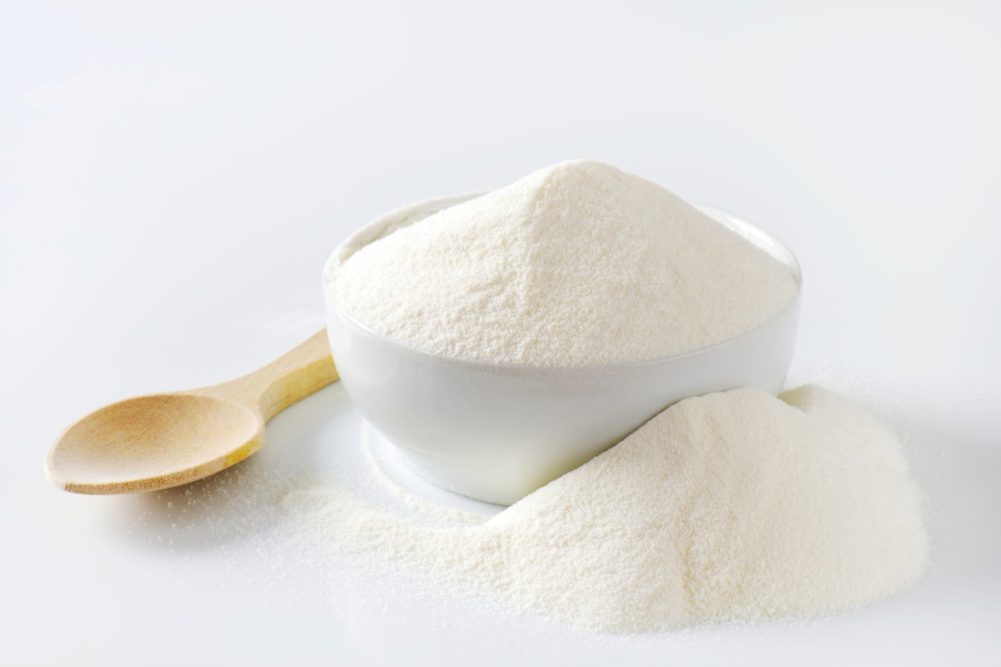There are a wide variety of milk powders, each with its own supply, demand and price dynamics. For instance, rennet casein prices are still at or near their record highs while dry whey prices are near two-year lows.
In general, milk powder prices trended lower over the second half of 2022 as milk production recovered from a period of decline and demand pulled back. The US exports more than half of the milk powder it produces, so prices are largely driven by global supply and demand dynamics.
NFDM and SMP
This is the main milk powder produced in the US and Europe. In the US, the FDA sets the specification for nonfat dry milk (NFDM), which is typically around 36% protein, but internationally CODEX sets the standard for skim milk powder (SMP), which is usually around 33% protein. Otherwise, they are effectively the same product, and the US does produce both.
The powder is exactly what it sounds like, remove the fat from the milk and dry the remaining solids into a powder. NFDM/SMP is typically used in food applications like yogurt, cheese, ice cream and dry baking mixes. From January to September, the US exported 72% of its NFDM+SMP production. However, exports were weaker than expected in the second and third quarter, which has allowed inventories to build a bit in the US and EU, which has weighed on prices.
From a long-term perspective, inventories aren’t heavy, but they were up about 5% from last year in September in the US and up an estimated 2.5% in Europe. Buyers have been sitting on the sidelines as prices have trended lower. The odds of prices moving sharply higher in the first quarter look limited, but inventories aren’t heavy.
Dry whey
Dried whey is typically around 12% protein, and the food applications are often the same as NFDM/SMP.
From January to September, the US exported 50% of its dry whey production. The price peaked at a record high in February and has been trending down since. The biggest single use of dry whey in the world is for feeding pigs in China. The dynamic zero-COVID policies in the country have reduced food service sales this year, which is hurting pork demand in the country. Dry whey prices in the US and Europe have stabilized in early November and could start to recover as Chinese whey demand improves.
Whey protein concentrates and isolates
The protein level can range between 25% to 89% for whey protein concentrates (WPC), while whey protein isolates (WPI) are typically 90% or higher. WPC/WPI is sold directly to consumers as a supplement, used in processed foods to increase protein content, and used in some dairy products.
Domestic demand for these products bounced higher last year as gyms reopened, which tightened stocks and drove prices to new record highs during the first half of 2022. The high prices have encouraged more production and hurt demand. Inventories of high protein WPC and WPI have been building and prices have been weakening in late 2022. There is likely more downside for prices as we get into early 2023.
There are a whole variety of other milk powders out there like lactose, dry permeate, casein, caseinates, buttermilk powder and whole milk powder. Maybe the biggest driver of all is Chinese import demand. Stronger domestic milk production in China, cooling economic growth and changing consumer patterns have been a drag on global dairy demand during 2022. Late in the year it looks like the demand is stabilizing, which would generally be positive for milk powder prices going into 2023. But it’s also possible the recent stability we’ve seen in Chinese imports late in the year is only temporary and we could still see imports (and prices) drop again in early 2023.
Editor’s note: This material should be construed as market commentary, merely observing economic, political and/or market conditions.
– Nate Donnay is the Director of Dairy Market Insight at StoneX Financial Inc. and has been applying his expertise in large complicated systems and statistical analysis to the international and US dairy markets since 2005.

